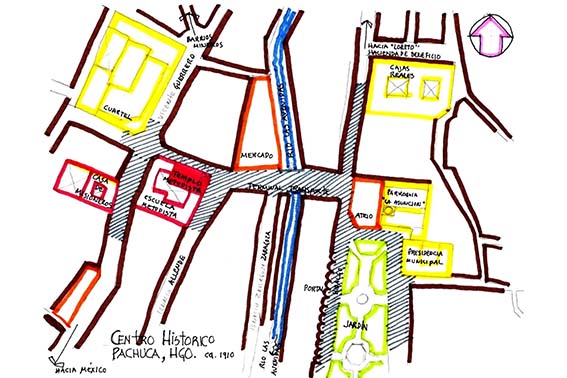Protestantism and the Liberal Movement
The Methodist Church of The Divine Saviour in Pachuca (Hidalgo, Mexico)
DOI:
https://doi.org/10.17979/aarc.2017.5.0.5155Keywords:
methodism, liberal movement, religious architecture, modernity, MéxicoAbstract
The temple The Divine Savior of the Methodist Church of Mexico (1901), was the regional center of that religious association, from where the missionaries and the new citizens required by the liberal republic left. Sui generis from its origin, this Church composed of descendants of English and Mexicans, built a unique temple of two levels: two similar sanctuaries for simultaneous use of their congregants.
Pachuca was a bastion of the Mexican liberal movement in the nineteenth century, supported by the Methodist congregation of El Divino Salvador and its schools, whose location is significant, by sharing the most notable public space in the city with the main Roman Catholic temple. From this congregation and its schools have emerged new temples and countless characters, prominent builders of the new society of the twentieth and twenty-first centuries.
Downloads
Metrics
References
Anda Alanís, Enrique X de. 1995. Historia de la Arquitectura en México. México: GG.
Bastian, Jean Pierre. 1984. Disidencia religiosa, mesianismo juarista y rebelión maderista, 1880-1911. Ponencia en el primer congreso CEHILA.
Bastian, Jean Pierre. 1984. Protestantismo y sociedad en México. México: CUPSA.
Butler, John Wesley. 1892. Mexico in transition from the power of Political Romanism to Civil and Religious Liberty. Nueva York: Hunt & Eaton.
Butler, John Wesley. 1918. History of the Methodist Episcopal Church in Mexico. Nueva York/Cincinnati: The Methodist Book of Concern.
García Escorza, Héctor. 2001. «Historia de un Templo, El Divino Salvador, en Pachuca, Hidalgo». Conferencia y presentación digital con motivo del centenario de su dedicación, 18 agosto.
García Escorza, Héctor. 2013. Para una historiografía incluyente. La arquitectura de las arquitecturas heterodoxias protestantes en México, 1870-1930. Tesis doctoral, Facultad de Arquitectura, Benemérita Universidad Autónoma de Puebla (México).
Fernández García, Justino. 1958. Arte Mexicano, de sus orígenes a nuestros días, México: Porrúa.
Katzman, Israel. 1973. Arquitectura del siglo XX en México. México: UNAM.
Macín Andrade, Raúl. 1983. Lutero: presencia religiosa y política en México. México: Nuevomar.
Macín Andrade, Raúl. 1991. Los derechos de las minorías religiosas en México. México: Claves Latinoamericanas.
Martínez García, Carlos. 2015. Albores del protestantismo mexicano en el siglo XIX. México: CUPSA.
Maza y de la Cuadra, Francisco de la. 1974. Del neoclásico al art nouveau y primer viaje a Europa. México: SEP-Stentas.
Menes Llaguno, Juan Manuel. 2010. Pachuca: un tiempo y un espacio en la historia. Pachuca: Ayuntamiento de Pachuca.
Montes Romero, Sara. 2013. «El Templo de la Iglesia Metodista Episcopal de Pachuca. El Tic tac del Reloj». El Sol de Hidalgo, 14 de febrero. Consultado el 01/11/2017. https://archive.is/20130413150307/http://www.oem.com.mx/elsoldehidalgo/notas/n2878791.htm#selection-993.0-993.54.
Pani, Erika. 2009. Conservadurismo y derechas en la historia de México. México: FCE-CONACULTA.
Rodríguez Viqueira, Manuel. 2009. Introducción a la arquitectura en México. México: Limusa-Noriega.
Ruiz Guerra, Rubén. 1992. Hombres nuevos: Metodismo y modernización en México (1873-1930). México: CUPSA.
Toussaint y Ritter, Manuel. 1983. Arte Colonial en México. México: UNAM.
Vargas Salguero, Ramón. 1998. México independiente: afirmación del nacionalismo y la modernidad. México: UNAM.
















